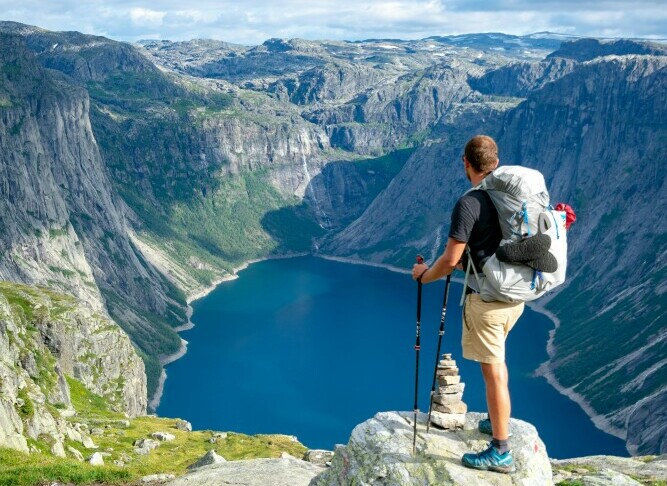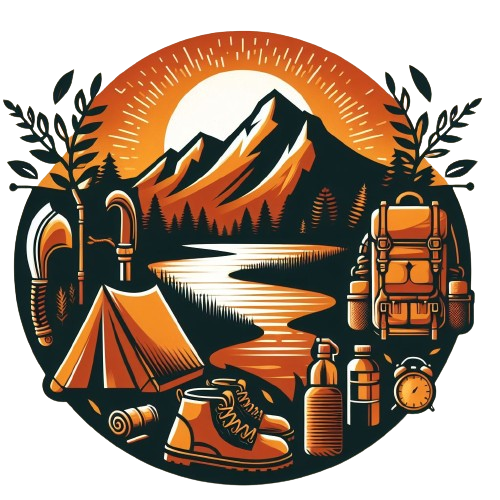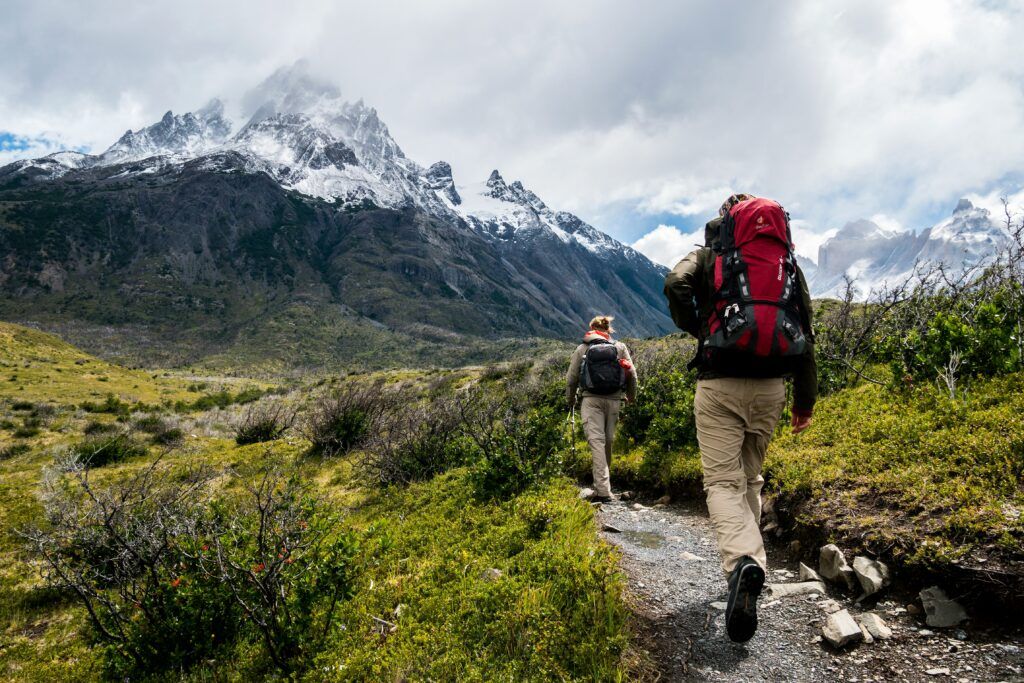Imagine waking up to the crisp morning air, unzipping your tent, and greeting a sunrise that paints the world in hues you’ve got to see to believe. Multi-day hiking isn’t just about the challenge; it’s about becoming part of the landscape and experiencing nature in its most undiluted form. This is an adventure that feeds the soul and tests the body, offering rewards that are as substantial as the backpack you’ll carry.
But the true enjoyment of such an escapade comes from knowing you’re fully prepared. Every successful multi-day hike begins long before you set foot on the trail. It starts at home, with methodical planning and careful packing. After all, peace of mind can make the difference between a trek that’s memorable for all the right reasons, and one that’s… well, let’s just say less than ideal.
I’m here to help you gear up for this thrilling journey. You’re going to find out about the joys and challenges of hiking over several days and, most importantly, how to prepare for them. This isn’t just about avoiding blisters or guessing how many granola bars you’ll munch. It’s about equipping yourself with knowledge, skills, and gear to ensure you thrive on the trail.
So, let’s lace up our boots and take the first step. As we navigate through this guide, you’ll be one stride closer to breathing in that fresh mountain air and creating memories that will last a lifetime—safely.
Planning Your Trip: Itinerary, Permits, and Personal Health
So, you’re gearing up for a multi-day hiking adventure? Great choice! The key to a successful trip lies in detailed planning. Don’t worry too much about getting everything perfect now, as you can always adjust your approach as you learn more. I’m going to walk you through some crucial steps that will help ensure you have an amazing time out there. First up, it’s all about the trail.
Choosing the right trail is crucial. Look for one that matches your fitness level and hiking experience. If you’re just starting out, pick a trail that’s known for its ease and scenic views rather than one with challenging terrains. You’re aiming for enjoyment, not an endurance test. I’ve seen too many hikers bite off more than they can chew, so trust me on this one.
Once you’ve set your sights on a trail, the next step is securing permits. Many trails require them, and they can sell out quickly, especially for popular destinations. Check out the park or trail website for details and book as early as possible. Knowing the regulations is also key. Some areas might have fire restrictions, wildlife advisories, or specific campsite rules.
In my opinion, you shouldn’t overlook personal health. Start conditioning your body well in advance. This includes cardio, strength training, and hikes with a loaded backpack to get used to the weight. Also, consider a physical check-up from your doctor. It’s about prevention and making sure you’re fit to hit the trail.
Last but not least, the importance of weather awareness cannot be overstated. Check forecasts regularly leading up to your trip and prepare for changing conditions. Have a contingency plan for severe weather. Nature can be unpredictable, and your safety comes first.
When you’ve got your itinerary down, permits in hand, and your health tuned up, that’s when the real fun begins – packing for your trek. But don’t sweat it; I’ve got you covered with a comprehensive packing list coming up next. Choose something that resonates with you, allows for comfort and safety, and watch how smoothly your trip goes.
The Comprehensive Packing List

Packing for a multi-day hiking trip isn’t just about throwing things into a backpack. It’s a careful balance between bringing what you need and keeping your load light. I’m going to help you strike that balance with this detailed packing list.
Your backpack is your lifeline; choose one that’s comfortable, adjustable, and with enough volume for your trip’s duration. For shelter, a lightweight tent, hammock, or bivy sack will be your home away from home. In the sleeping gear department, pack a suitable sleeping bag for the climate and an insulated sleeping pad for ground comfort.
When it comes to clothing, think layers. Start with a moisture-wicking base layer, add an insulating middle layer, and pack a waterproof and windproof outer layer. Don’t forget your hat, gloves, and sturdy hiking boots. Choose materials that dry quickly and wick away sweat.
Food and water are your energy suppliers. High-calorie, protein-rich foods that don’t spoil easily are your best friends on the trail. Think nuts, dried fruits, and energy bars. For water, determine refill points and carry a reliable filter or purification tablets. Always carry a bit more than you think you’ll need.
Read more about water purification techniques for safe drinking water.
Don’t lose your way – a map, a compass, or a GPS device is a must-have, along with the skills to use them. A first-aid kit tailored to your group size and trip length is crucial. Include personal medications, blister treatments, and items for minor injuries.
Here is a guide how to navigate with a map and compass: basics for beginners. And first aid tips for common camping injuries.
For emergency preparedness, a whistle, a multi-tool, and a headlamp with extra batteries are essential. Lightweight fire-starting tools and an emergency shelter can be lifesavers in critical situations.
For lightweight fire-starting tools and methods read this: fire starting methods in the outdoors: which is best?
Finally, comfort items like a lightweight book, camera, or trekking poles can enhance your experience. But remember, every ounce counts. Your comfort on the trail is about more than just creature comforts; it’s about managing your energy and enjoying the journey.
You’re going to find out more about what to do once you’re wearing that well-stocked backpack and stepping out on the trail. Next up, it’s all about staying healthy and safe on your multi-day adventure.
On the Trail: Health, Safety, and Leave No Trace

Now that you’ve tackled the packing list, you’re almost ready to hit the trail and immerse yourself in nature’s wonders. But your responsibility doesn’t end with a well-packed backpack. Health and safety are paramount on any hiking trip, especially when it’s spread out over multiple days.
You should perform daily health checks on yourself and your hiking companions. Keep an eye out for signs of dehydration, altitude sickness, or hypothermia, depending on your hiking environment. Manage fatigue by setting a reasonable pace and taking breaks as needed—listen to your body!
Wildlife is a marvelous part of the hiking experience, but it’s crucial to take precautions. Read up on the animals you might encounter and know how to respond to each. Always store food properly to avoid attracting wildlife to your campsite.
Embracing the principles of Leave No Trace is essential. This means packing out what you pack in, staying on the trails, and minimizing campfire impacts. Remember, you’re a visitor in the home of countless plants and animals.
While documenting your trip, do so in a way that prioritizes the environment and your safety. Sharing your experiences can inspire others to undertake their own adventures, but always portray a responsible and respectful approach to the wilderness.
As you return from your multi-day hiking journey, you’ll likely carry memories that will last a lifetime. You also have the power to leave the trails as pristine as you found them, ensuring they remain a sanctuary for both wildlife and fellow adventurers.

